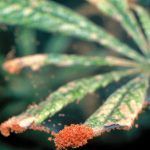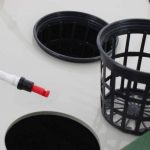20 Tricks to solve Cannabis Deficiences
Today, we bring you the definitive guide to solving nutritional deficiencies in cannabis. We have identified that many of the issues in cannabis cultivation occur due to nutrient deficiencies or excesses, which motivated us to compile this list of tips.
List of Tips to Resolve Nutritional Deficiencies in Cannabis
If you notice that your plants exhibit any of the symptoms described in the tricks we present, take note of the remedy we provide and apply it. Nutrient excess or deficiency in cannabis is, fortunately, a problem that can be corrected quickly and with minimal damage to the crop. Let’s start with the list!
1. Alfalfa and Cottonseed
One of the best methods to combat the nitrogen deficiency in cannabis is the use of products based on alfalfa and/or cottonseed meal. These elements provide proteins that resolve nitrogen deficiency in cannabis. Additionally, alfalfa produces triacontanol, a phytohormone that promotes plant growth.
By mixing alfalfa hay with cottonseed oil, obtained by pressing the seeds, you can obtain a slow-release nitrogen-rich fertilizer. This combination is appropriate during the vegetative growth of the plants when nitrogen is most needed for cannabis.

2. Cal-Mag
As the name suggests, Cal-Mag has a formula based on calcium and magnesium. It not only provides these two elements but can also resolve nutritional deficiencies in cannabis, such as nitrogen, phosphorus and potassium. Therefore, be cautious with this formula, as it contains a large amount of nutrients.
Cal-Mag should be used during the vegetative growth of cannabis, never during flowering. Using it during flowering would add excess nitrogen, something to be avoided during the phase of flowering.
Cannabis roots absorb calcium and magnesium at an appropriate pH level (6.5). If the pH is outside these values, calcium deficiency can cause black spots on the leaves, potentially causing them to wilt. To correct this, check the pH of the crop and use Cal-Mag during growth according to the manufacturer’s instructions.
3. Calcium Nitrate
Another option to resolve nutritional deficiencies in cannabis is the Calcium Nitrate. This compound contains 15% nitrogen and can even raise the pH level if necessary. Again, avoid using this product during flowering, as it is not advisable to provide too much nitrogen during this phase.
4. Chelated Minerals
Chelated minerals are minerals that have bonded to the root of organic compounds and are necessary for transporting oxygen and nutrients in cannabis. Since minerals are inorganic, the chelation process facilitates the absorption of minerals by plants. Therefore, it can be used to resolve nutritional deficiencies in cannabis.
The most common use of chelated minerals is for copper, iron, manganese and zinc deficiencies. In the hydroponic medium, many water enrichment formulas contain chelated minerals prepared to resolve nutritional deficiencies in cannabis.
5. Compost Tea
Compost is a rich source of beneficial microbes and micronutrients for cannabis. These strengthen the cannabis immune system and prevent many diseases and pests. For this, compost tea can be the boost your plant needs if it suffers from nutritional deficiencies.
To make compost tea, you can visit our article on how to make Super Soil. In case of nutrient deficiencies, it is best to apply compost tea through foliar application. However, you can also apply compost tea with a drip irrigation system.

6. Fish Emulsion and Fish Meal
A fish emulsion, formed by grinding the inedible parts of fish, is also a wonderful source of nitrogen for cultivation. The advantage of treatments to resolve nutritional deficiencies in cannabis with fish meal is that they contain additional beneficial micronutrients.
Fish meal serves as a slow-release nitrogen fertilizer, making it a good ally for promoting vigorous plant growth during the vegetative stage. Therefore, the use of fish meal or fish emulsion during the flowering phase of cannabis is not recommended.
7. Guano
The guano is a highly effective fertilizer derived from the feces and urine of seabirds or bats living in caves. They are rich in nitrogen, phosphorus and mineral salts. Bird guano has a higher nitrogen level than bat guano, and before using these products, carefully read the manufacturer’s instructions for correct dosage.
Additionally, guano has a less intense smell than animal manure, making it a more “discreet” additive when it comes to resolving nutritional deficiencies in cannabis. Guano can be applied through foliar spraying or a soil bath, mixing a quarter cup of guano per 4 liters of water.
8. GreenSand
Langbeinite, green sand or Greensand is the result of grinding sandstone, a type of soft rock rich in potassium and iron. Green sand is useful for resolving nutritional deficiencies in cannabis and is used in climates near the sea, where the soil is rich in clay minerals and marine fossils.
Green sand gradually releases potassium and iron, two minerals that are very beneficial during the flowering stage. Especially if you mix langbeinite with homemade compost. As you can see, most of these remedies for combating nutrient deficiencies in cannabis work best when used in conjunction with compost.
9. Granite Dust
Granite dust is a source of slow-release potassium and may contain other micronutrients that stabilize the alkaline levels of the soil. For it to be more effective, it is recommended to mix granite dust with a solution containing 50% compost and introduce them into the growing medium.
When the granite dust mixes with the soil, it stimulates the growth of organic matter, which feeds beneficial microorganisms. An additional benefit of granite dust is that it helps retain moisture in the plant and conserves water. This can be a significant advantage in drier and hotter climates.

10. Gypsum
Hydrated calcium sulfate is a natural mineral found in many soils. It is used in agriculture to correct sodium levels in the soil. Gypsum, when added to the soil, is a source of calcium and sulfur for cannabis and reduces the toxicity of aluminum and ammonia that certain fertilizers can produce.
If you notice that the surface of your cannabis crop is crusty, using gypsum can help break it down, allowing new seedlings to sprout from the soil and appear. Additionally, adding gypsum to clay soils will prevent this crusting problem on the crop surface.
11. Iron Supplements
A iron deficiency has clear symptoms in cannabis. The most obvious is the yellow color that appears on the plant’s leaves. If the pH levels are correct, iron deficiency does not usually occur, so the best way to prevent it is by measuring the pH of the water, soil, or growing medium you use.
When iron deficiency exists and we need to use supplements, it is advisable to stop using all other fertilizers we have been using so far. These could counteract the effectiveness of the iron supplement.
12. Seaweed Concentrates
The seaweed is very effective in resolving nutritional deficiencies in cannabis. Especially potassium and copper. It is available in the form of organic products for cannabis cultivation. These products contain more than 70 vitamins, minerals and enzymes that provide the health the soil needs.
Adding seaweed to the compost pile helps speed up the decomposition process, so you get compost faster. But also richer, as seaweed helps dissipate unwanted weeds on the surface of the cannabis crop. It is advisable to apply it early in the morning or in the evening.

13. Lime
Lime is an easy-to-obtain compound used to regulate the pH levels of the cannabis crop. This is because it is an element with high alkaline properties. Fertilization with nutrients and feeding the plants with lime should not be done together. Doing so simultaneously can cause the properties of both compounds to cancel each other out.
First, we find hydrated lime, necessary in small quantities in the soil and is the most used formula to correct the soil pH. Liquid lime mixes more quickly with the soil than hydrated lime; therefore, it can be a good solution if we want to correct the pH quickly and effectively.
14. Epsom Salt
Also known as magnesium sulfate, salts can resolve nutritional deficiencies in cannabis, such as those related to the deficiency of magnesium and sulfur. In hydroponic growing media, add a teaspoon of Epsom salt to every 4 liters of reservoir water, or apply foliar.
This recipe is also suitable for outdoor cannabis cultivation; in this case, introduce the mixture of water and salts directly into the soil. Magnesium is essential for seed germination and also stimulates the creation of chlorophyll in marijuana. If that is not enough, these salts also strengthen cell walls.
15. Flowering Boost
There is a wide range of products that will make your cannabis explode during flowering. The flowering boost will give your plants the dose of nutrients they need. Just do not use them with other products unless the manufacturer advises you to do so. It will also improve sugar production, making your plants more flavorful and potent.
16. Mycorrhizae
The roots of fungi are an important component for the generation of life in the soil. Especially in the generation of the root system of the plants. Mycorrhizal fungi extract nutrients from the beneficial microbes that are in contact with the roots.
They act as an extension of the cannabis roots, working deep in the soil to provide nutrients and water to the roots. This results in healthier marijuana plants that are free of nutritional deficiencies.

17. Nitrate Salts
Nitrate salts are inorganic salts soluble in water, which allows very quick penetration into the plant. Nitrates used in fertilizers for cannabis include ammonium, sodium, potassium, and calcium and serve to resolve nutritional deficiencies in cannabis in the aforementioned nutrients.
18. Rock Phosphate
Rock phosphate is a mineral that is naturally extracted from the soil. It offers a slow release of phosphate, the second most abundant macronutrient, which is essential for a well-balanced soil in cannabis cultivation. Check the pH levels before applying rock phosphate.
As a general rule, rock phosphate should only be used to alter the pH when the pH is above 7.0.
19. Urea
Urea, which comes from urine, as the name suggests, can be used to correct nitrogen deficiencies. However, after being mixed with soil, urea undergoes intense chemical changes that release ammonia into the soil. This can burn seeds and seedlings, so follow the manufacturer’s instructions carefully.
20. Zinc Salts
The last of the products to resolve cannabis nutritional deficiencies is zinc. Zinc is an enzyme that helps in the formation of chlorophyll. Zinc deficiency is often a result of soil pH being too high. A zinc deficiency in cannabis can be noted by a reduction in leaf size.
This concludes our article on how to resolve nutritional deficiencies in cannabis. If you enjoyed this article, we recommend you follow us in our newsletter and in your social media.
Sources: MRS, Sharepoint, Hemp CES
Founder of Experiencia Natural, creative and entrepreneur, designer, master in grower and marketing. For a normalization of all plants and substances, giving priority to patients and users.















